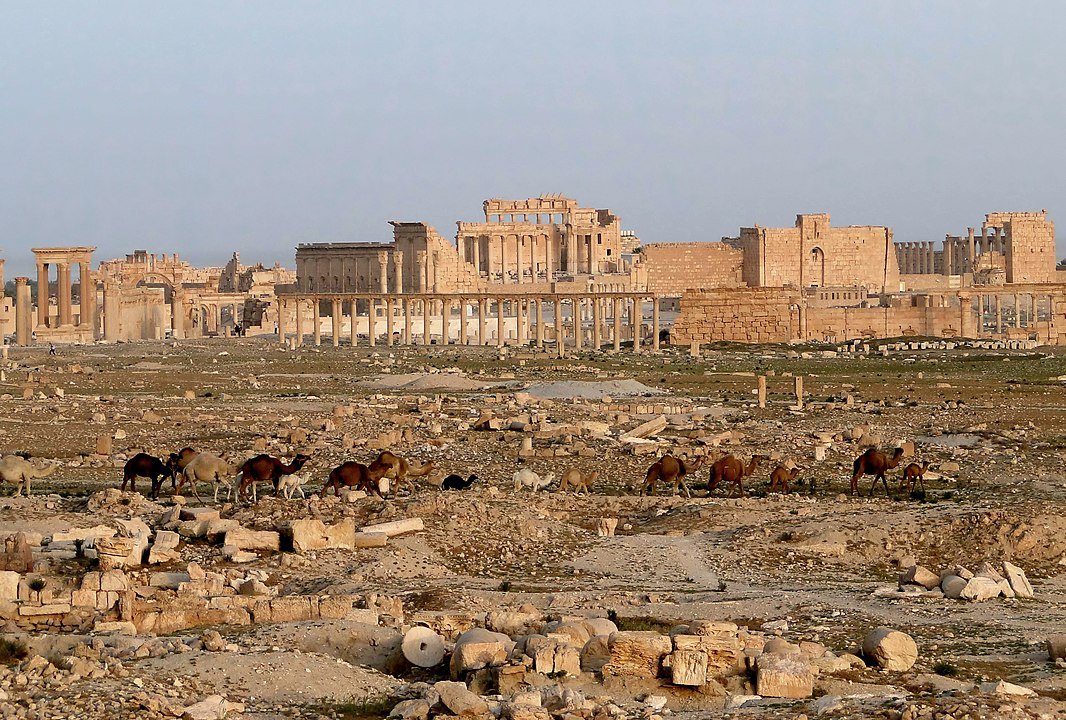Around 35,000 stolen Syrian artifacts have been retrieved by the authorities since the beginning of the 11-year war in Syria, an antiquities official told Xinhua on Sunday.
On Thursday the National Museum in Damascus opened a new exhibition highlighting around 100 of the retrieved pieces, which cover two thousand years of ancient Near Eastern history, but with a particular emphasis on the Classical city state of Palmyra.
“The exhibition highlights a very important topic which is recovering [antiquities] in general, as well as the victims and martyrs… who sacrificed their lives to prevent the loss of this treasure and archeological heritage,” explained Firas Dadoukh, Director of Cultural Relations at the Directorate of Antiquities and Museums.
“In total, 35,000 pieces have been restored, of which 100 pieces are being displayed in this exhibition,” he continued.
Many of the pieces belong to the northern regions like Idlib, which is still held by Islamic extremist groups like Hayat Tahrir al-Sham. Idlib was the site of one of the world’s oldest definable empires, called Ebla. Established in the middle 3rd millennium BCE—more than 5,000 years ago—the city was excavated from 1964 and became famous for the Ebla tablets, an archive of about 20,000 cuneiform tablets found there, dated to around 2,350 BCE.
Coverage from Thursday’s opening can be viewed here on Ruptly
Picking up the pieces
As with much of the Middle East over the last 40 years, Syria contains archeological patrimony that begins with the oldest periods in recorded history, but that also maintains a continual involvement with written world events long into the Common Era.
During the conflicts between the Syrian Arab Republic, the government in Iraq, and their allies in Russia and Iran against the Islamic State, all too much of this antiquity was destroyed by terrorists claiming it to represent idol worship, and therefore against the will of god.
Perhaps more importantly, the smuggling of artifacts from these conflict zones represented an important revenue source for these groups, of which there were dozens during the height of the conflict.
These countries are now beginning to pick up the pieces, archeologically speaking. International aid is being organized to rebuild the famous al-Nuri Mosque in Mosul, Iraq, and in February of this year, the Syrian Directorate for Museums and Antiquities announced the beginning of a restoration process for the archeological site of Palmyra.
Established in the 2nd millennium BCE, Palmyra for years grew wealthy from Mediterranean-Mesopotamian trade, a position these Amorite and Aramean peoples held for more than 2,000 years, becoming a tax-exempt colonia under Roman Emperor Hadrian.
Their contact with the Mesopotamian world gave them a written language, local deities, and an organizational structure, while contact with the Mediterranean led to the development of iconic sculptural styles and architecture, some of which still stands today.
It wasn’t until 273 CE that the city was destroyed. After, it was rebuilt, converted to Christianity, then to Islam after being taken during the Arab conquests. It was then taken by the Byzantines, destroyed by the Timurid Empire to no more than a village before the descendants of this long history were deported by French colonial authorities.
In 2015, ISIL destroyed parts of the ancient city. It was retaken by the Syrian army in 2017. WaL
PICTURED ABOVE: Palmyra in 2010, source of many of the exhibited artifacts. PC: Bernard Gagnon. CC 3.0. SA.
If you think the stories you’ve just read were worth a few dollars, consider donating here to our modest $500-a-year administration costs.



